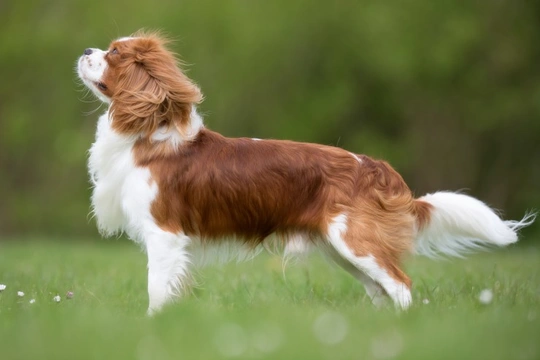
Why the Cavalier King Charles spaniel controversy at Crufts?
March is possibly the biggest month in the dog lover’s calendar in the UK and even the world, because March means that the world-famous Crufts dog show takes place at the NEC in Birmingham, with competitors coming from all over the world, hoping to take home one of the much-coveted titles to show for all of their hard work.
However, something else that has gone hand in hand with Crufts over the last few years is controversy-something that has accompanied the competition since the BBC aired their documentary Pedigree Dogs Exposed in 2008.
Pedigree Dogs Exposed blew the lid off a lot of the in-house practices used by pedigree dog breeders, The Kennel Club and the Crufts judges, highlighting a range of problems such as unhealthy breed standards, sick dogs winning awards, and the general condition and welfare of pedigree dog breeds in the UK.
Certain breeds have now come to the fore as those that have for many years been bred for appearance and exaggerations rather than for health-such as the English bulldog, other brachycephalic breeds, and the Cavalier King Charles spaniel.
This year, the Cavalier King Charles spaniel was perhaps the most controversial breed at the competition and outside of it-with even the Best of Breed winning dog in the group drawing negative attention from dog lovers, lobbying groups, and others.
In this article, we will talk about this in more detail, covering why the winning dog of the breed has generated negative publicity, and what the issue is. Read on to learn more.
Cavalier King Charles spaniel health
The Cavalier King Charles spaniel is a small breed that is many people’s preferred lapdog, and these small, cute and very affectionate dogs have a lot to recommend them!
However, like many dog breeds today, the modern appearance of the Cavvie is rather different to their historical norms, due to selective breeding to enhance certain popular traits. Deliberately selective breeding dogs to produce a certain appearance is not always a good thing though, as exaggerations can lead to problems with the conformation that can make life for the dog uncomfortable, more challenging or even painful-as is the case with exaggeration in the Cavalier King Charles spaniel.
The main problem with the breed is that they are prone to developing syringomyelia due to the size of their skulls, which can cause cysts and cavities to form along the spinal cord, and place pressure on the nerves.
For dogs suffering from these congenital defects, their lives are apt to be plagued by pain, which in the worst cases can essentially take the form of a permanent migraine from which the dog can gain no relief.
Understandably, few dog owners would want to wish such a condition upon their pets-and so the breed standard for today’s Cavvie is aimed to produce dogs bred for health, not exaggeration.
Tests are available to screen for syringomyelia in order to allow breeders to decide not to breed dogs that will have the problem-and testing is also available for mitral valve disease, another issue that plagues the breed due to selective breeding. However, these tests are not DNA tests, which means that tested dogs must reach a certain age before the test will return a reliable result-which means that breeding should wait until the dog has reached that age and tested clear.
These tests mean that theoretically, it should be possible to virtually eradicate both of these serious conditions from the breed within a couple of generations-providing that breeders undertake testing, and do not breed dogs that test badly.
Best of Breed controversy
The Cavalier King Charles spaniel that won Best of Breed at this year’s Crufts was just two and a half years old, and has already fathered seven litters. This, despite the fact that testing for mitral valve disease cannot be performed until a dog is 2.5 years old, means that not only did the owners of the winning dog knowingly put him to stud without knowing his status-but also that the judges at Crufts essentially endorsed this position by awarding him the Best in Breed accolade.
At the same Crufts event, a formal petition with over 30,000 signatures was handed to The Kennel Club, asking them to mandate testing for mitral valve disease and syringomyelia in the parent dogs before a litter can be registered. However, The Kennel Club stated that they will not enforce this suggestion, leaving campaigners disillusioned and concerned for the welfare of the breed.
The awarding of Best of Breed to a young, untested dog also flies in the face of the official breeding guidelines of the Cavalier Club itself, showing once more a lack of consistency between guidance offered to breeders and judges in the public eye, and what actually happens in effect in the show ring.



